What Is Cerebral Palsy?
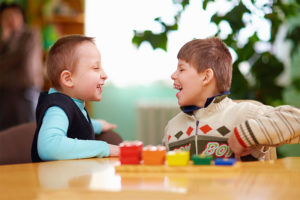 Cerebral palsy is a group of disorders that affect the brain’s control over muscles and the nervous system. It develops due to brain damage shortly before or during birth.
Cerebral palsy is a group of disorders that affect the brain’s control over muscles and the nervous system. It develops due to brain damage shortly before or during birth.
The condition affects different parts of the body, so its symptoms and severity can vary. Additionally, cerebral palsy does not improve or worsen as a child grows, but complications stemming from the condition can cause additional health issues.
Cerebral palsy has no cure, but therapy, medication, and surgery can help improve your child’s quality of life. Depending on how severe their condition is, patients may be able to live independently or they may require lifelong care. Fortunately, there are various support and financial resources available to help families affected by cerebral palsy.
IS YOUR CHILD MISSING DEVELOPMENTAL MILESTONES?
Take Our Milestones Quiz
Taking note of your child’s physical, social, and emotional skills can help you determine if they potentially suffered from an injury at birth. An early diagnosis can help your child get the treatment they need as soon as possible.
Q1: How old is your child?
0-2 MONTHS DEVELOPMENTAL MILESTONES QUIZ
- Q2: Can your child hold their head steadily on their own?
- Q3: Can your child push themselves up when they are lying on their stomach?
- Q4: Has your child started to make smoother movements with their arms and legs?
- Q5: Does your child smile at other people?
- Q6: Can your child bring their hands to their mouth?
- Q7: Does your child turn their head when they hear a noise?
- Q8: Does your child coo or make gurgling noises?
- Q9: Does your child follow things with their eyes?
- Q10: Does your child try to look at their parents or caregivers?
- Q11: Does your child show boredom, cry, or fuss when engaged in an activity that hasn’t changed in a while?

3-4 MONTHS DEVELOPMENTAL MILESTONES QUIZ
- Q2: Can your child hold their head steadily on their own?
- Q3: Does your child push down on their legs when their feet are on a flat surface?
- Q4: Has your child started to roll over from their stomach to their back?
- Q5: Can your child hold and shake a toy such as a rattle?
- Q6: Does your child bring their hands to their mouth?
- Q7: Does your child play with people and start to cry when the playing stops?
- Q8: Does your child smile spontaneously, especially at people?
- Q9: Does your child copy some movements and facial expressions of other people?
- Q10: Does your child babble with expressions and copy sounds they hear?
- Q11: Does your child cry in different ways to show hunger, pain, or tiredness?
- Q12: Does your child respond to affection like hugging or kissing?
- Q13: Does your child follow moving things with their eyes from side to side?
- Q14: Does your child recognize familiar people at a distance?

5-6 MONTHS DEVELOPMENTAL MILESTONES QUIZ
- Q2: Can your child roll over on both sides (front to back/back to front)?
- Q3: Has your child begun to sit without support?
- Q4: Does your child rock back and forth?
- Q5: Can your child support their weight on their legs (and perhaps bounce) when standing?
- Q6: Has your child begun to pass things from one hand to the other?
- Q7: Does your child bring objects such as toys to their mouth?
- Q8: Does your child know if someone is not familiar to them and is a stranger?
- Q9: Does your child respond to other people’s emotions, such as a smile or a frown?
- Q10: Does your child enjoy looking at themselves in the mirror?
- Q11: Does your child look at things around them?
- Q12: Does your child respond to sounds they hear by making sounds themselves?
- Q13: Does your child make sounds to show joy or displeasure?
- Q14: Does your child respond to their own name?
- Q15: Has your child started to string vowels together, such as "ah," "eh," or "oh," or started to say consonant sounds such as "m" or "b"?
- Q16: Has your child begun to laugh?
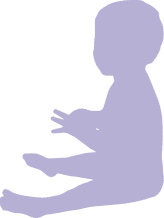
7-9 MONTHS DEVELOPMENTAL MILESTONES QUIZ
- Q2: Can your child crawl?
- Q3: Can your child stand while holding on to something to support them?
- Q4: Can your child sit without support?
- Q5: Can your child pull themselves up to stand?
- Q6: Does your child play peekaboo?
- Q7: Can your child move things from one hand to the other?
- Q8: Can your child pick small things up, such as a piece of cereal, with their thumb and index finger?
- Q9: Does your child look for things that they see you hide?
- Q10: Does your child watch the path of something as it falls?
- Q11: Does your child show fear when around strangers?
- Q12: Does your child become clingy with adults who are familiar to them?
- Q13: Does your child have favorite toys?
- Q14: Does your child use their fingers to point?
- Q15: Does your child understand “no”?
- Q16: Does your child make a lot of repetitive sounds, such as “mamama” or “bababa”?
- Q17: Does your child copy the sounds and gestures of other people?
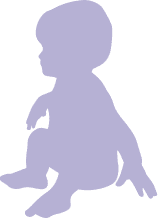
10-12 MONTHS DEVELOPMENTAL MILESTONES QUIZ
- Q2: Can your child stand alone with no support?
- Q3: Does your child walk while holding on to furniture?
- Q4: Can your child take a few steps without holding on to anything?
- Q5: Can your child get into a sitting position without any help?
- Q6: Does your child bang two things together when playing?
- Q7: Does your child poke with their index finger?
- Q8: Has your child started to use things like hairbrushes or drinking cups correctly?
- Q9: Does your child find hidden objects easily?
- Q10: Does your child play peekaboo or pat-a-cake?
- Q11: Does your child become shy or nervous around strangers?
- Q12: Does your child repeat actions or sounds to get attention?
- Q13: Does your child put out an arm or leg to help when getting dressed?
- Q14: Does your child cry when a parent leaves the room?
- Q15: Does your child show that they have favorite things or people?
- Q16: Does your child show fear?
- Q17: Does your child say things such as “mama,” “dada,” or “uh-oh”?
- Q18: Does your child try to say the words you say?
- Q19: Has your child started to use gestures like waving or shaking their head “no”?
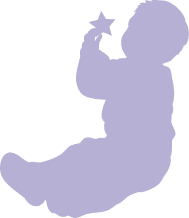
13-18 MONTHS DEVELOPMENTAL MILESTONES QUIZ
- Q2: Can your child walk by themselves?
- Q3: Does your child walk up stairs and run?
- Q4: Does your child pull toys while walking?
- Q5: Can your child drink from a cup on their own?
- Q6: Can your child eat with a spoon on their own?
- Q7: Can your child help undress themselves?
- Q8: Does your child have occasional temper tantrums?
- Q9: Does your child show affection to familiar people?
- Q10: Does your child become clingy in new situations?
- Q11: Does your child explore their environment alone with parents close by?
- Q12: Can your child say several single words?
- Q13: Can your child say and shake their head “no”?
- Q14: Does your child point to show things to other people?
- Q15: Does your child scribble?
- Q16: Does your child know what ordinary products such as phones, spoons, and brushes are used for?
- Q17: Can your child follow one-step commands such as “sit down” or “stand up”?
- Q18: Does your child play with a doll or stuffed animal by pretending to feed it?

19-23 MONTHS DEVELOPMENTAL MILESTONES QUIZ
- Q2: Has your child begun to run?
- Q3: Has your child kicked a ball?
- Q4: Can your child climb down and onto furniture on their own?
- Q5: Can your child walk up and down stairs while holding on?
- Q6: Can your child stand on their tiptoes?
- Q7: Has your child thrown a ball overhand?
- Q8: Does your child copy others, especially people older than them?
- Q9: Does your child get excited around other children?
- Q10: Has your child shown more independence as they've aged?
- Q11: Does your child do what they were told not to do and become defiant?
- Q12: Does your child point to things when they are named?
- Q13: Does your child know names of familiar people or body parts?
- Q14: Does your child say 2 to 4-word sentences?
- Q15: Does your child repeat words they hear?
- Q16: Does your child complete sentences and rhymes in familiar books?
- Q17: Does your child name items in books, such as dogs, cats, and birds?
- Q18: Does your child play simple pretend games?
- Q19: Has your child started to use one hand more than the other?
- Q20: Has your child begun to sort shapes and colors?
- Q21: Does your child follow 2-step instructions, such as “pick up your hat and put it on your head?”

24+ MONTHS DEVELOPMENTAL MILESTONES QUIZ
- Q2: Can your child run easily?
- Q3: Can your child climb?
- Q4: Can your child walk up and down stairs with one foot on each step?
- Q5: Can your child dress and undress themselves?
- Q6: Does your child show affection for friends without being told?
- Q7: Does your child take turns when playing games?
- Q8: Does your child show concern when others are crying?
- Q9: Does your child understand the idea of “mine" and "theirs"?
- Q10: Does your child show many different emotions?
- Q11: Does your child copy adults and friends?
- Q12: Does your child separate easily from their parents?
- Q13: Does your child get upset when there is a major change in their routine?
- Q14: Does your child say words such as “I,” “me,” “we,” “you,” and some plural nouns?
- Q15: Can your child say their first name, age, and gender?
- Q16: Can your child carry on a conversation with 2 to 3 sentences?
- Q17: Can your child work toys with buttons and other moving parts?
- Q18: Does your child play pretend with dolls, animals, or people?
- Q19: Can your child finish 3 or 4 piece puzzles?
- Q20: Can your child copy a circle when drawing?
- Q21: Can your child turn pages of a book one page at a time?
- Q22: Can your child turn door handles?
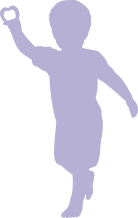
Cerebral Palsy Causes
Damage to an infant’s brain during pregnancy, labor, or delivery is the primary cause of cerebral palsy. This damage may impact different parts of the brain (motor cortex, basal ganglia, and/or cerebellum), which each control different motor movements.
 Motor cortex
Motor cortexDamage to the motor cortex causes spastic cerebral palsy. Your child may experience increased muscle tone, making their muscles very stiff.
 Basal ganglia
Basal gangliaDamage to the basal ganglia causes dyskinetic cerebral palsy. Your child’s muscle tone can alternate from too loose to too tight, which may cause them to struggle to control their arms and legs.
 Cerebellum
CerebellumDamage to the cerebellum causes ataxic cerebral palsy. Your child may struggle with their balance and coordination.
Damage to any part of the brain can be caused by a number of different risk factors, the most prevalent being head injury or trauma. Premature birth or low birth weight can also lead to brain damage and other complications.
Another risk factor that may lead to cerebral palsy-related brain damage is complications shortly before or during delivery that cause bleeding or lack of oxygen to the brain (hypoxia). Additionally, if the mother suffers from an infection while pregnant, the virus can attack the fetus and cause severe issues.
With proper medical care, your child is less likely to suffer brain damage. This may help prevent the condition.
Cerebral Palsy and Medical Negligence
Cerebral palsy is sometimes a result of medical negligence, which occurs when medical staff do not meet the standard level of care expected of them, putting your child in danger before and during childbirth.
Some forms of medical negligence that can result in cerebral palsy include:
- Failure to monitor the baby’s heartbeat and vital signs
- Failure to perform an emergency C-section in a timely manner
- Misuse of forceps and vacuum extractors
- Forcing, pulling, or twisting babies out of the birth canal during delivery
Your health care team may be held responsible for failing to take the necessary precautions to prevent your child’s birth injury. If your health care team did not provide you with proper medical treatment and support, they could be at fault for your child’s cerebral palsy. In this case, you may be able to file a lawsuit to help pay for your child’s treatment and other costs.
Types of Cerebral Palsy
There are four main cerebral palsy types, with each type affecting different areas of the brain and presenting different symptoms.
Spastic Cerebral Palsy
Spastic cerebral palsy is the most common form of the condition, comprising up to 80% of patients. Spastic cerebral palsy is caused by trauma or injury to the motor cortex portion of the brain before, during, or after childbirth.
Those who suffer from spastic cerebral palsy experience chronically tense muscles, or hypertonia. Hypertonia may impact other parts of the body as well, resulting in loss of control over the affected limbs.
There are 3 subtypes of spastic cerebral palsy.
Spastic Hemiplegia
This subtype of cerebral palsy impacts only the left or right side of the body. Common signs of spastic hemiplegia are one constantly clenched first, or limbs consistently tucked into one side of the body.
Spastic Diplegia
This particular subtype impacts only the lower half of the body. Infants and toddlers may have difficulty learning to walk, but most children eventually walk using their toes instead of the whole foot. It is also called “Little’s Disease.”
Spastic Quadriplegia
Spastic quadriplegia impacts all four limbs and the entire body, making it the most severe form of spastic cerebral palsy. The effects of spastic quadriplegia become apparent early in life, and parents will notice this when their child fails to meet anticipated baby milestones, such as controlling their head and crawling within one year.
Ataxic Cerebral Palsy
Ataxic cerebral palsy is the rarest type of cerebral palsy, accounting for about 5-10% of patients.
This type occurs when the cerebellum of the brain is permanently damaged. The cerebellum does not control physical movement but sends signals to the body for muscles to move. These signals may occur too slowly or do not occur at all, resulting in unsteady movement, reduced muscle tone, and lack of coordination (ataxia).
Ataxia typically affects all or most of the body at once, but may impact any part of the body, including arms, legs, fingers, eyes, and throat.
A mix of early intervention, therapy, and medication can help people with ataxic cerebral palsy thrive in their daily lives.
Athetoid Cerebral Palsy
Athetoid cerebral palsy, also known as dyskinetic cerebral palsy, is found in 20% of patients.
Athetoid cerebral palsy is caused by injury to the basal ganglia, an area of the brain responsible for automatic movement, fine voluntary movements, and posture. The particular type of athetoid cerebral palsy experienced depends on which part of the basal ganglia is damaged.
There are two subtypes of athetoid cerebral palsy:
- Choreoathetoid dyskinetic cerebral palsy: Characterized by two different types of movements: athetosis and chorea. Patients experience fluctuations in muscle tone that can affect their posture and movements.
- Dystonic dyskinetic cerebral palsy: Causes muscle contractions when a patient tries to move, leading to awkward postures, repetitive movements, and slow twisting.
Mixed Type Cerebral Palsy
Since cerebral palsy is an umbrella term for a group of conditions that impair the functions of the brain and nervous systems, mixed cerebral palsy is a combination of different cerebral palsy types. Mixed type cerebral palsy can impair your child’s movement, cognition, sight, and hearing.
Cerebral Palsy Symptoms
Cerebral palsy symptoms may affect muscle control, coordination, balance, and cognitive development. The type and severity of a patient’s condition influence the symptoms they show. In most cases, symptoms take months or years to become apparent.
Physical symptoms include:- Stiff muscle tone
- Floppy muscle tone
- Variations in muscle tone
- Involuntary movements or tremors
- Lack of coordination
- Difficulty walking or toe-walking
- Favoring one side of the body
- Difficulty sucking, eating, or swallowing
- Excessive drooling
- Lack of fine motor skills
- Delays in developmental skills
- Learning disabilities
- Abnormal pain or touch perception
- Seizures
- Abnormal speech rhythms
- Hoarse voice
- Monotone voice
- Nasally voice
Cerebral Palsy Diagnosis
To make a cerebral palsy diagnosis, your child’s doctor will review their medical history and perform assessment tests to determine the specific type your cerebral palsy baby has — or if they have a different diagnosis altogether.
Did You Know? Most children who have cerebral palsy are diagnosed within the first 3 years of life.
Your child’s doctor may also order more advanced tests, such as an ultrasound, MRI, or EEG, to confirm the diagnosis. These tests allow doctors to study the brain to pinpoint the location and extent of the damage, helping them make a more accurate diagnosis.
To perform a complete assessment, the doctor may conduct hearing, vision, speech, and intellectual tests to take note of any developmental delays and observe your child’s muscles and motor skills. If you are still not sure whether your child has cerebral palsy, you can seek a second opinion.
Cerebral Palsy Life Expectancy
When a child is diagnosed with cerebral palsy, they will also receive a prognosis, which is a doctor’s estimate on the short- and long-term outcomes for your child’s diagnosis.
According to the Life Expectancy Project, a research group at the University of California, the main factors considered for life expectancy in cerebral palsy are gross motor skills and feeding. A child that is able to fully move and self-feed has a life expectancy that is no different than that of a person without the condition.
- Can feed self
- Minimal motor skill impairment
- Chance of living to 20 years old: 99%
- Uses feeding tube
- Wheelchair bound
- Chance of living to 20 years old: 40%
Unlike many other serious health conditions, cerebral palsy does not worsen over time since the brain injury occurred in one isolated instance. Other co-mitigating factors and separate conditions not caused by the initial brain injury may impact health and life expectancy over time.
Those with a longer cerebral palsy prognosis usually have more mobility, proper medical care, adaptive equipment, and greater autonomy and independence.
Cerebral Palsy Treatment
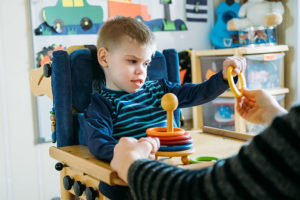

Different treatment plans may be recommended depending on the severity of your child’s condition. Children with severe epilepsy may be prescribed medication to prevent seizures, while children with milder cases of cerebral palsy may only require ongoing physical therapy. Surgery is usually considered a last resort.
Ultimately, all forms of cerebral palsy treatment can be used to improve the quality of life for children with the condition and help them live more independently.
Therapy
Therapy is one of the best options to treat and manage your child’s cerebral palsy. Therapists use different methods to decrease cerebral palsy symptoms.
Different cerebral palsy therapies:
- Physical therapy: Uses specific exercises to help improve flexibility, balance, movement, motor skills, and strengthen muscles.
- Speech therapy: Helps children who have difficulty with the movement of their mouth, affecting their speech and communication skills.
- Occupational therapy: Focuses on helping children become more independent in school, work, and home environments.
- Aquatic therapy: Helps children move muscles more freely while immersed in water. Trained therapists hold large therapy sessions in pools with water-focused adaptive exercise equipment.
Medication
There are several different types of cerebral palsy medications that can help treat symptoms such as seizures and spasticity. Since each child is different, the use of medications can vary depending on a child’s prevalent symptoms.
Surgery
Surgery may be necessary if symptoms do not respond well to other forms of treatment or cause complications that cannot be eased by therapy. Certain cerebral palsy surgeries help to reduce symptoms such as muscle spasticity or contractures.
Cerebral Palsy Financial Assistance
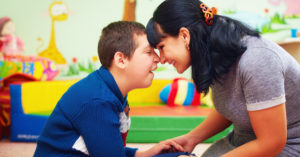

Founded to alleviate financial stressors on families affected by cerebral palsy, financial support organizations offer grants and assistance to pay for therapy, medications, surgeries, and education.
Filing a cerebral palsy lawsuit may also give families the opportunity to receive the financial compensation needed to pay for their child’s treatment.
The amount of compensation received from a cerebral case can vary based on the severity of your child’s condition. Some families have been awarded millions to provide care and reparations for pain and suffering. Your cerebral palsy lawyer can analyze the facts of your case and try to secure the highest amount of compensation possible.
If your child developed cerebral palsy stemming from medical malpractice or negligence, you can help protect your child’s future by pursuing the justice you may deserve.
Cerebral Palsy FAQ
When is cerebral palsy diagnosed?
Although cerebral palsy is almost always present at birth, it often goes undetected until years after child birth, making it difficult to diagnose early on in life. This can make it difficult for a doctor to pinpoint the exact cause of the damage that led to your child’s condition.
What does mild cerebral palsy look like?
The signs of mild cerebral palsy often go undetected for years. Based on the Gross Motor Function Classification System (GMFCS), children with mild cerebral palsy fall in the Level I classification and are fully independent and able to perform most physical activities with only slight problems in balance or coordination.
How common is cerebral palsy?
The Centers for Disease Control and Prevention (CDC) states that cerebral palsy is the most common childhood motor disability, with about 1 in 323 children diagnosed. Also, according to the United Cerebral Palsy (UCP), there are about 8,000 cases of cerebral palsy each year in the United States.
How does cerebral palsy affect the brain?
Cerebral palsy is caused by permanent damage to the brain, which can affect the brain’s control over muscles and the nervous system. Muscles are unable to respond to the brain’s signals for movement, causing spastic or floppy muscles and overall lack of motor function. Cerebral palsy can also affect cognitive development and overall brain functioning.









